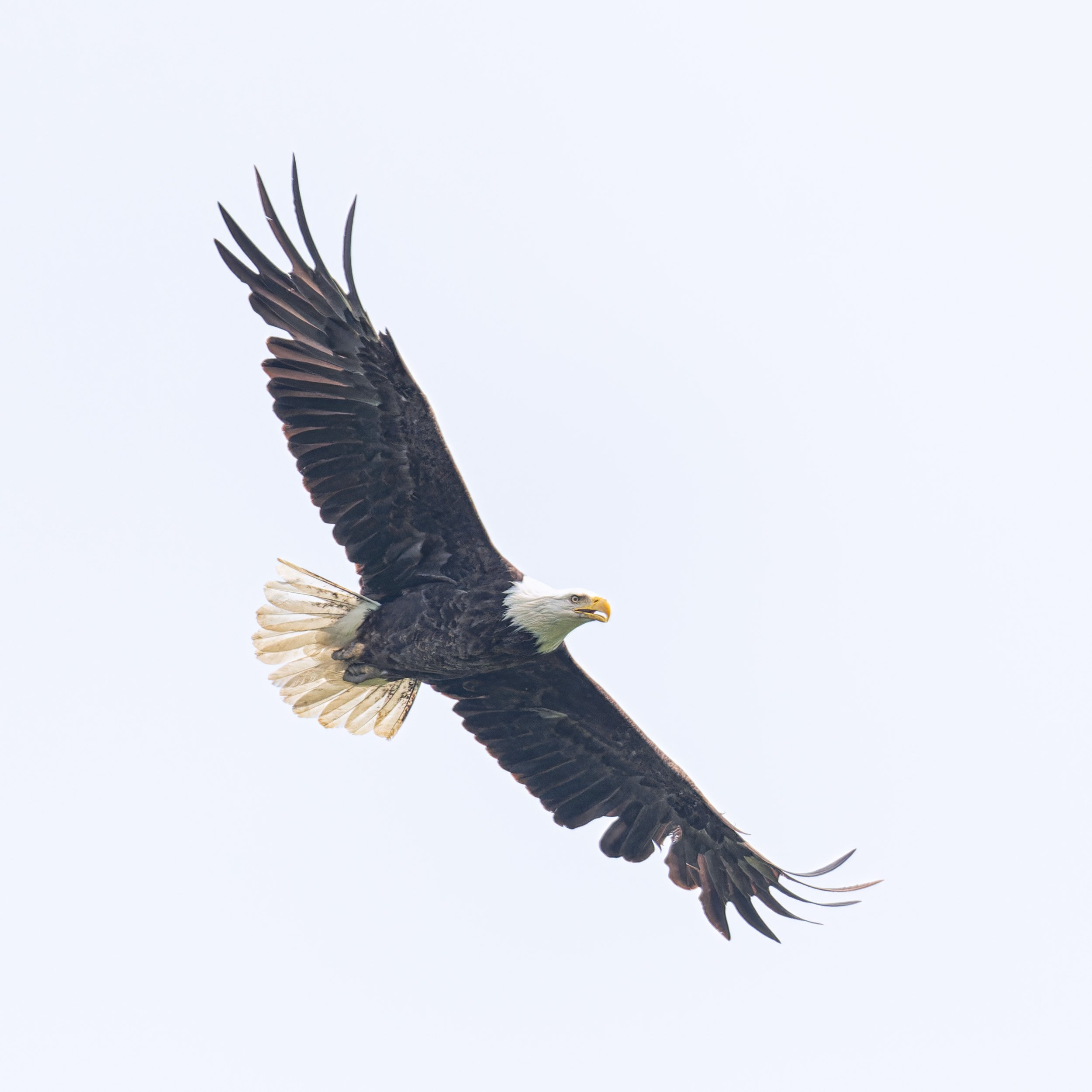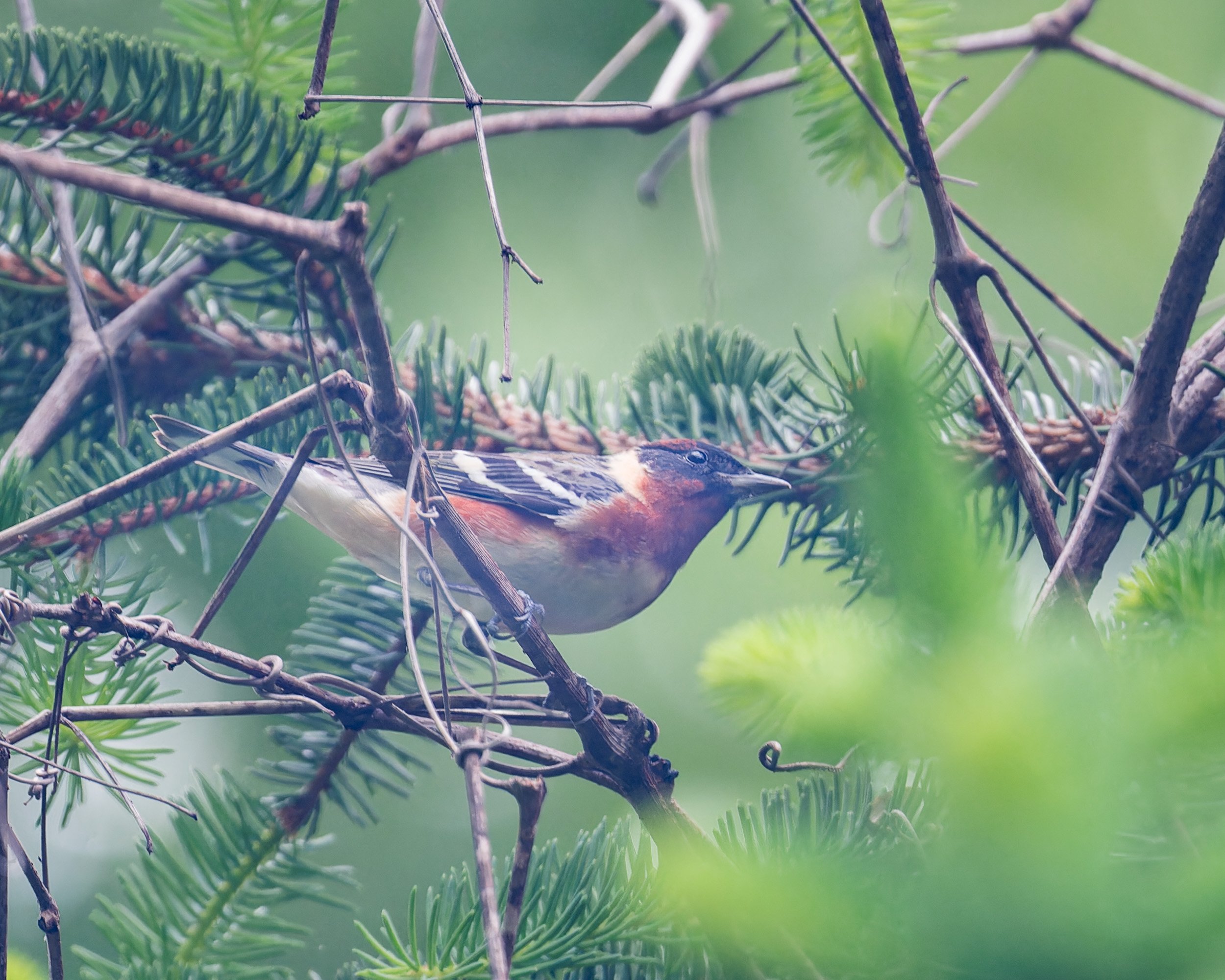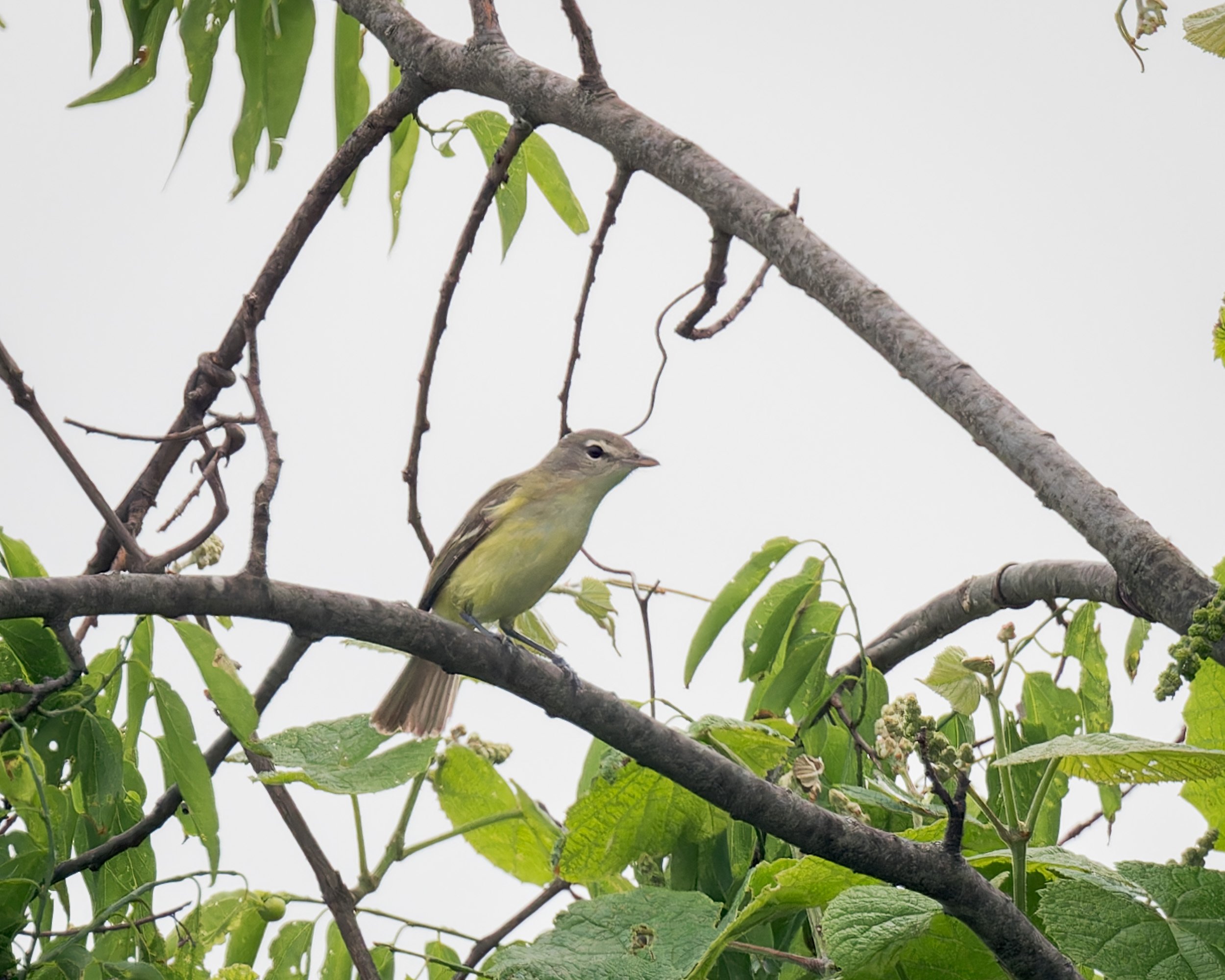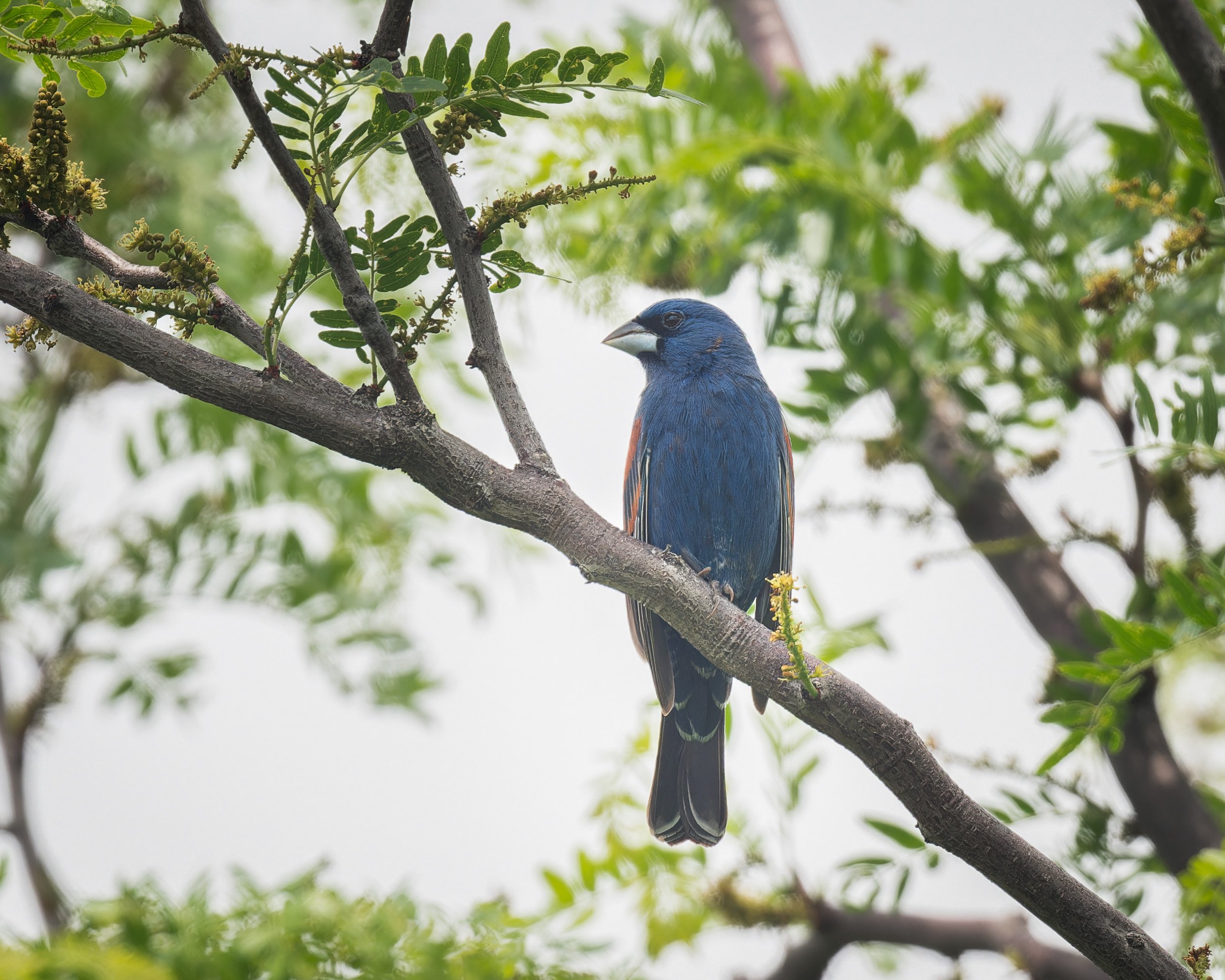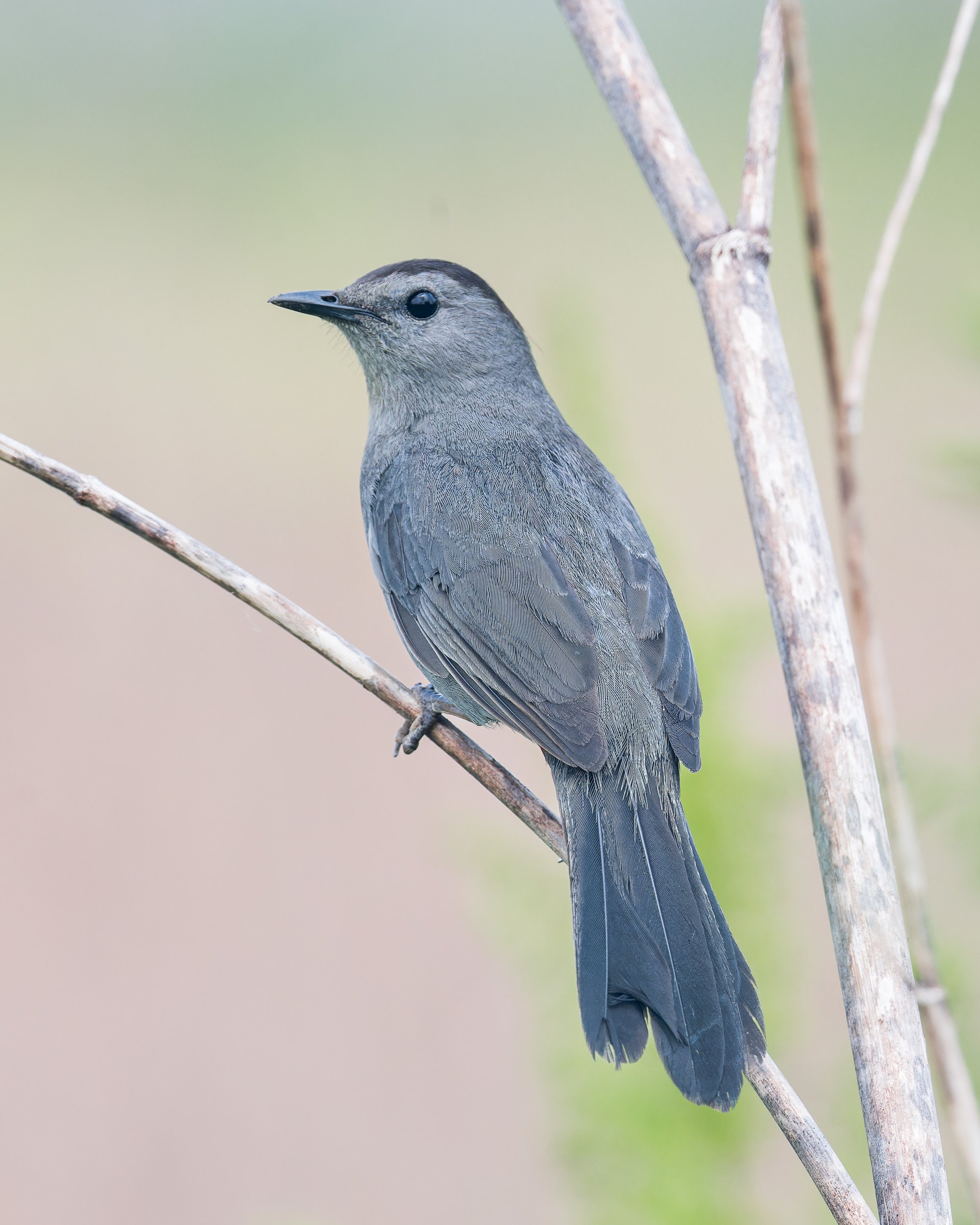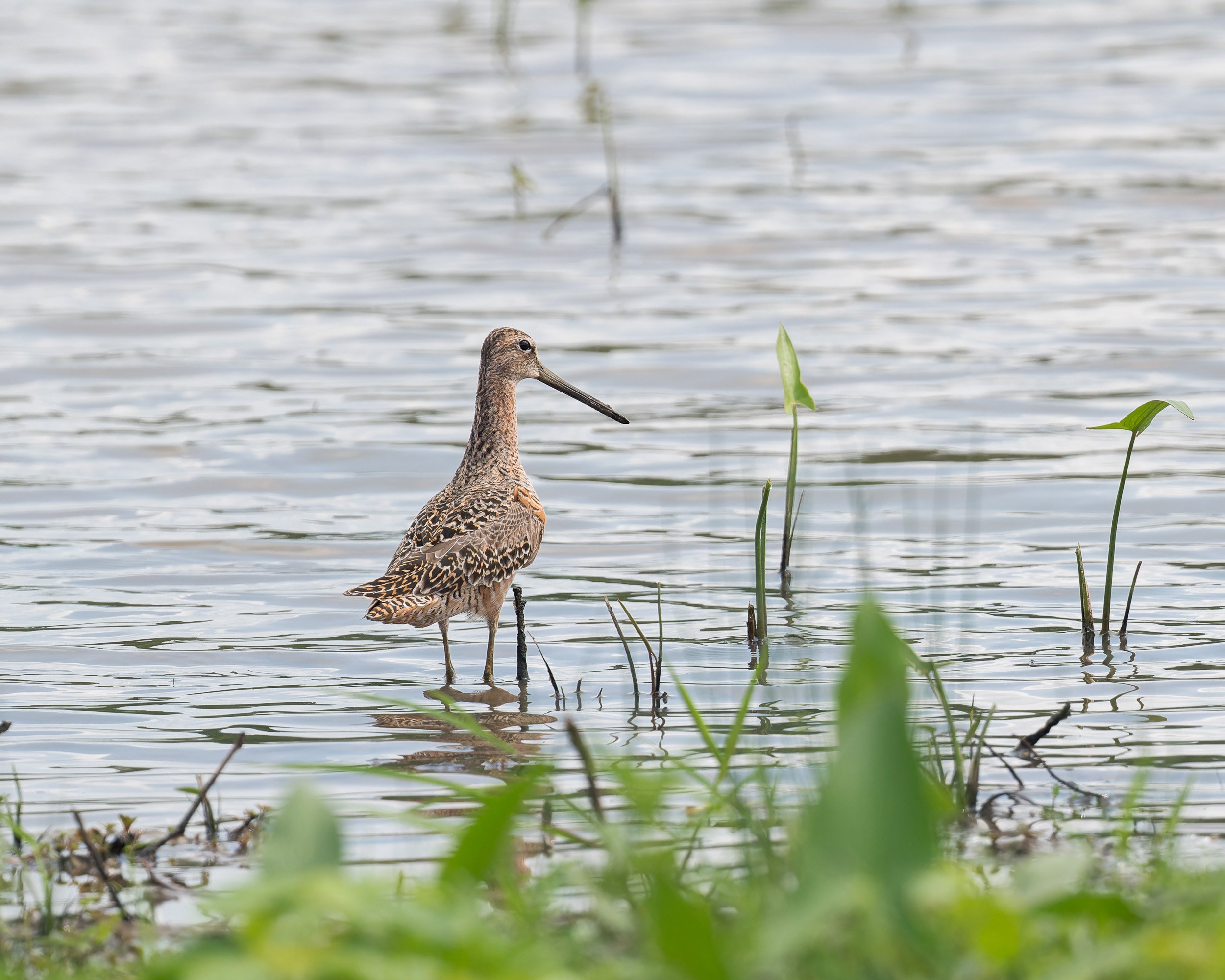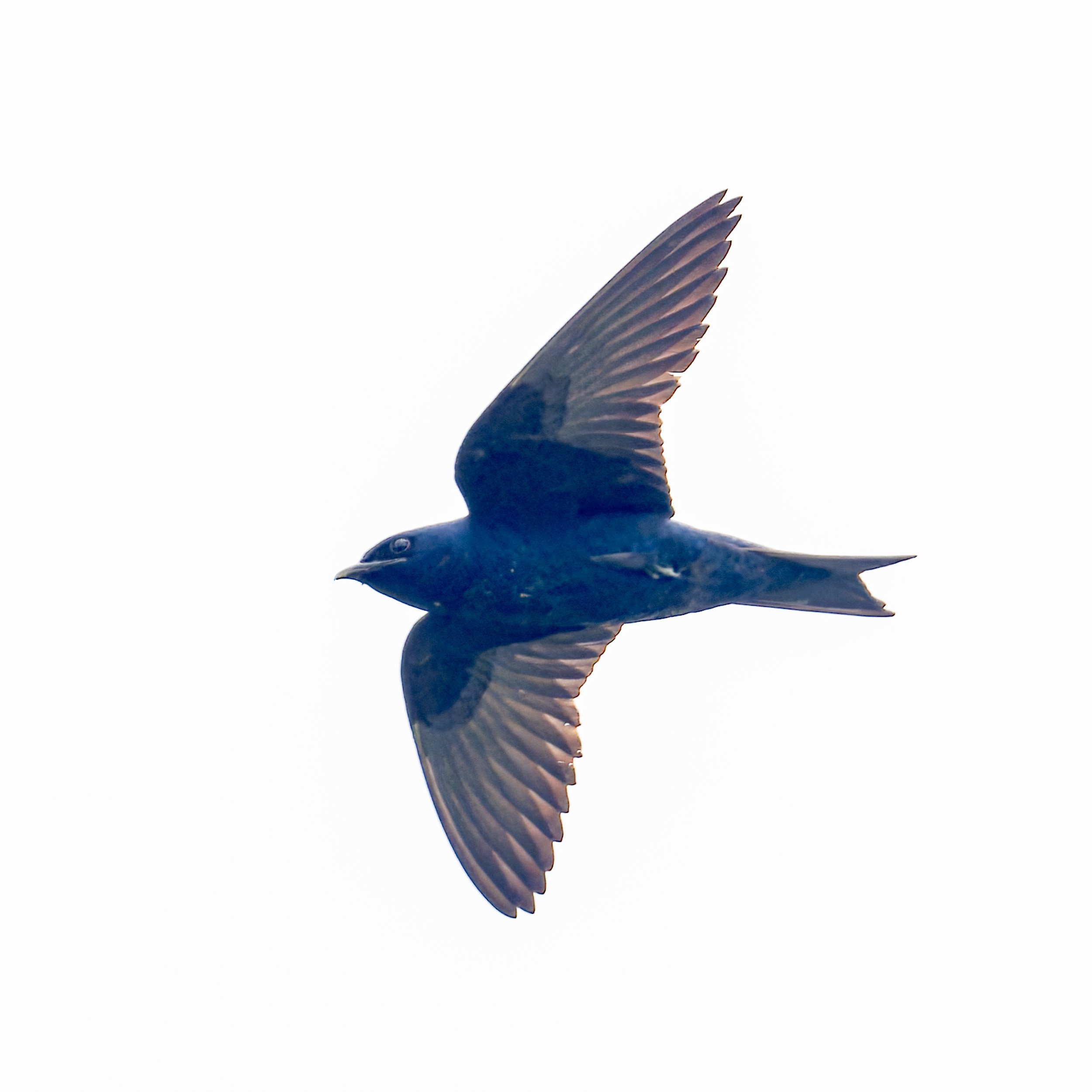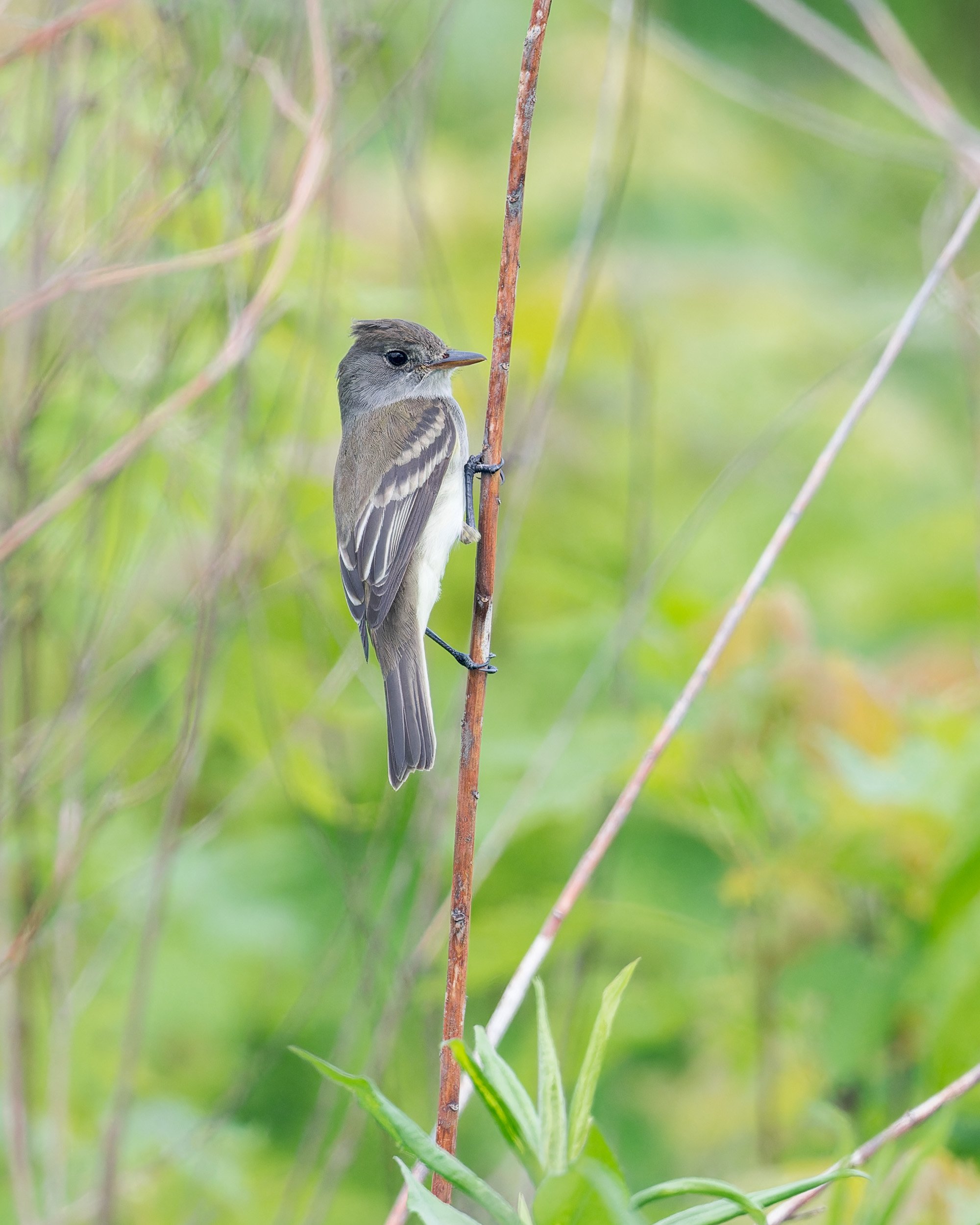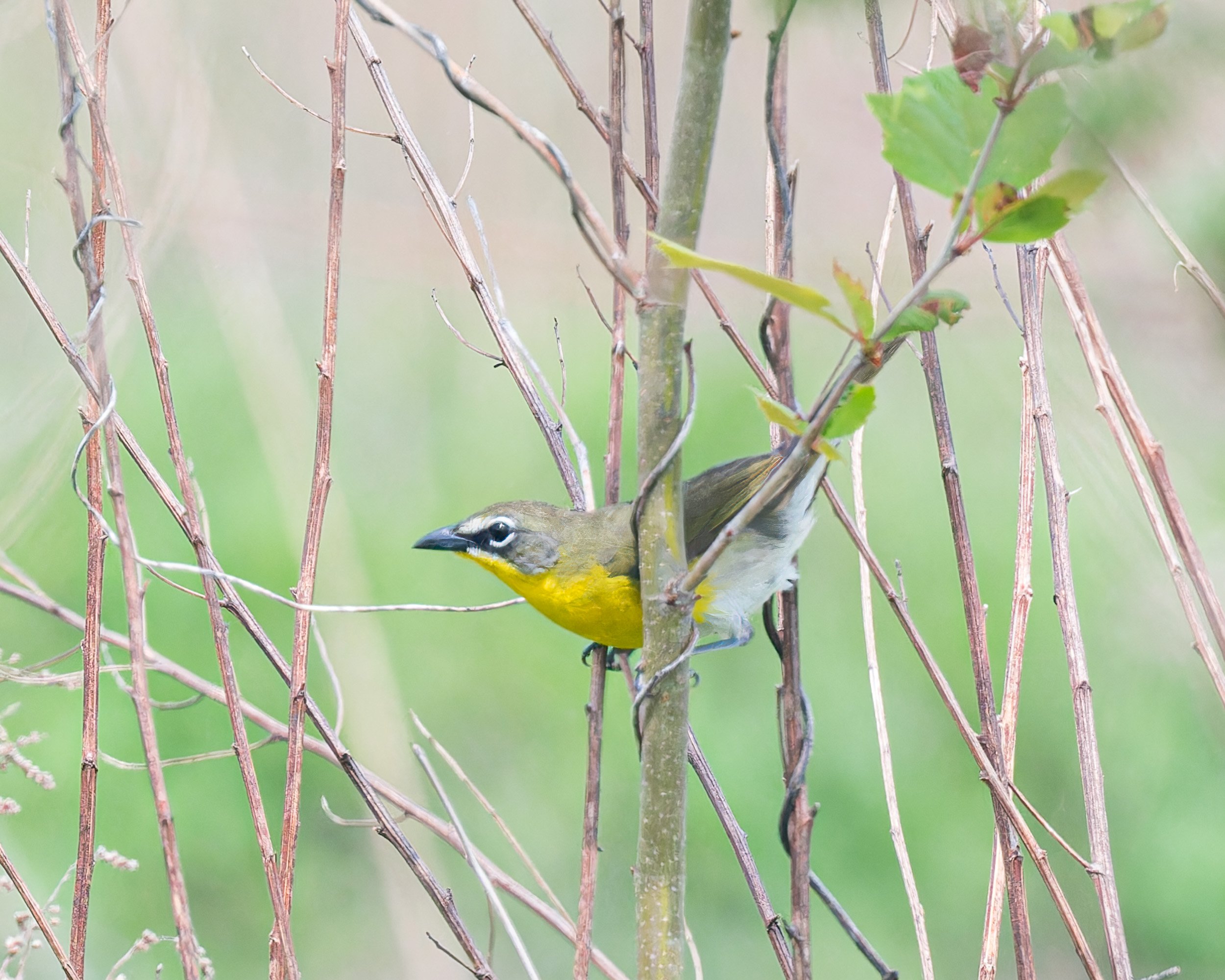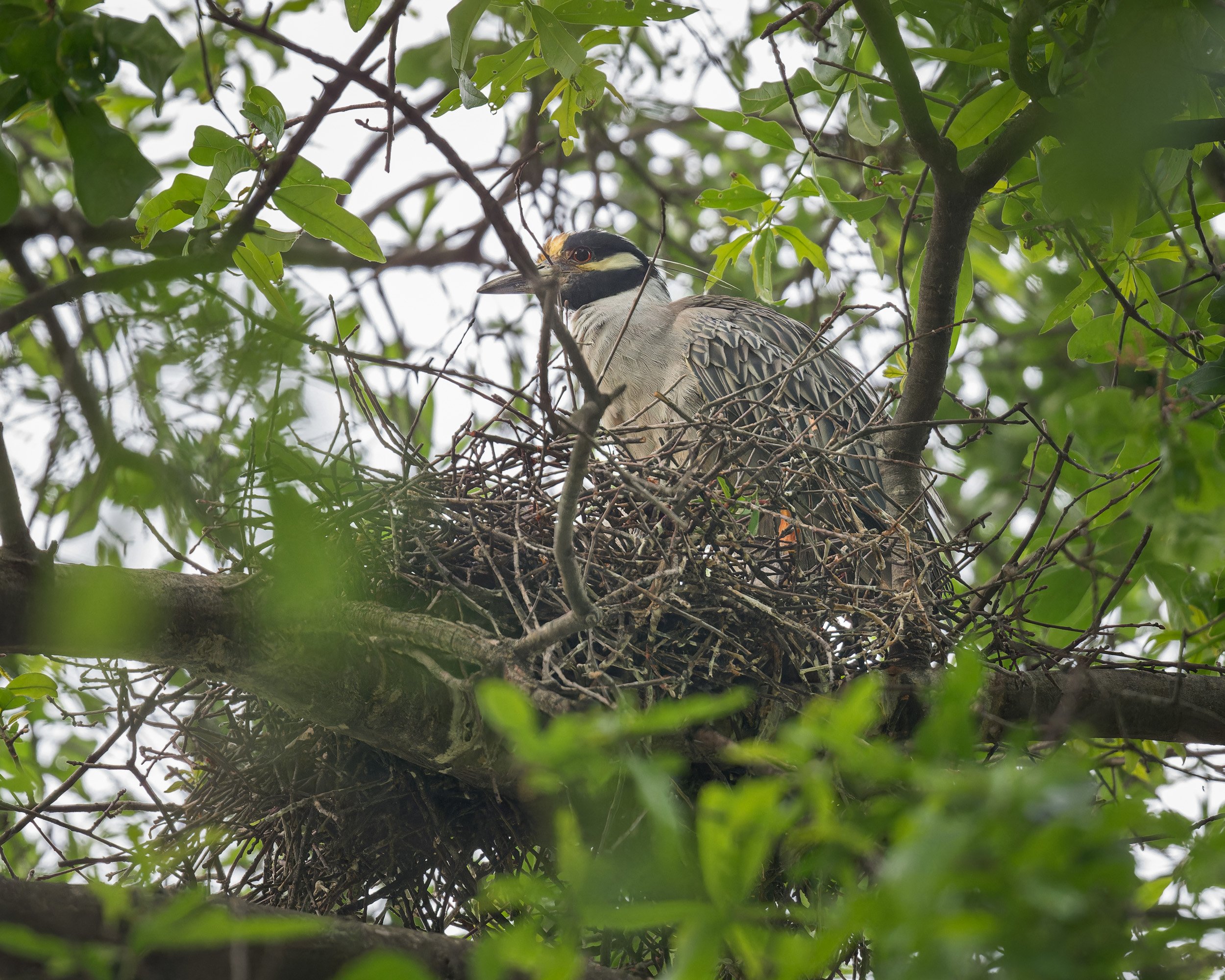Saturday, May 13, 2023, was the Cornell Lab of Ornithology’s Global “Big Day.” Birders from over two-hundred countries work together to observe as many of the world’s species as possible in a single day. This year over 55,000 people submitted over 135,000 checklists. Together, we recorded 7,497 different species of birds, or about seventy percent of those known to exist.
It was a memorable day for me. As has become my custom on Big Day, I submitted my first eBird checklist while having coffee on my back deck around 7:30am. Twelve hours, eleven checklists, and 8.9 walking miles later, I recorded species number 100, a pair of nesting yellow-crowned night herons that have taken up residence in a front yard just a couple miles from my neighborhood. (For those without context wondering, “is 100 a lot?” yes, over 100 in this part of the world in a single day is a lot).
This year’s tally tops my previous Big Day record of ninety-four species back in 2020, and it is the first time I have exceeded the century mark in one day. After reviewing photos I added two more species — Cape May and palm warblers — that were backlit and high in the treetops making them tough to ID in the field. Those additions made my final Big Day count 102 species.
Martha and I often say, “wherever you go, there you are,” and I could not help notice that the “me” on a day of birding, chasing a made up goal, bears a striking resemblance to me at work, me the dad, me the husband, and me wherever I am. In particular, I notice my negativity bias. We all have it. It is a vestige of evolution. Those who assumed the rustle in the bushes was a lion tended to pass on their genes more often than those who assumed it was just the wind, and while most of us don’t have to worry about lions, the bias remains. In the birding “me,” I notice my tendency to dwell on the “notable misses” (birder lingo for the ones that got away).
I found no Cooper’s or red-shouldered hawks, birds I see almost daily. No black-and-white warblers, one of the more common warbler species. I struggled to find even a black vulture, a bird I can spot from my backyard most days. When I realized, around 6pm, standing near the pond at Caperton Swamp, that had reached ninety-nine species, I was certain that the resident prothonotary warblers, the pair that tried just a day earlier to chase me out of their territory, would be number one hundred, but they were nowhere to be found. How dare they?! I haven’t seen a yellow-billed cuckoo all year and yesterday was no exception. Green herons, any sparrow species other than song, Cherokee Park’s resident barred and great-horned owls, all missed, all disappointing. If only…
But here is the more objective reality: my day began with the call of a Connecticut warbler almost as soon as I stepped out of the car at Cherokee Park. It was the first of three rarities for the day, and a species I would have never expected to find. My average for Connecticut warblers is less than one per year. Moreover, when I went to find the Connecticut, I found two birding friends who were finding it too (we birders run to the call of a rarity like my dogs to the sound of the treat bag opening). That chance meeting resulted in my going to a great location I would not have otherwise visited with people I really enjoy. There we found Bell’s vireo, rarity number two, two bald eagles, a blue grosbeak, blackpoll warbler, willow flycatcher, and several others that I could not have reasonably “planned” to find.
From there, I chased a rare Nelson’s sparrow that had been spotted at Garvin Brown Nature Preserve. That, I knew, would be a tall order. Sparrow chasing is often an exercise in futility, but in the process I stumbled upon my third rarity of the day, a long-billed dowitcher feeding at the edge of the pond in the adjacent Hays Kennedy Park. And despite the missing prothonotary warblers at Caperton Swamp, I was only in a position to reach one hundred because the initially hidden hooded merganser ducklings emerged from their hiding spot at just the right time, followed by a very timely northern flicker and red-headed woodpecker. The red-headed woodpecker was particularly fortunate. It completed the woodpecker “sweep” (all six of the possible species*). It is the hardest to find in this area, just my second time seeing one at that location. I did not expect to have that bird on my list, and yet there it was!
So, yesterday was not a story of notable misses. It was a story of highlights, and while we tend to ruminate on the things that don’t go as planned, we would do well to spend a little more time noticing when things go better than we could have imagined. There are more of those than we realize, and for me yesterday was one of them.
Highlights:
3 rarities: Connecticut warbler, Bell’s vireo, long-billed dowitcher. I didn’t get a photo of the Connecticut, but Jamie Baker got a great shot just as I walked up.
16 species of warblers
The woodpecker “sweep” (all six of our breeding season species: pileated, northern flicker, red-headed, red-bellied, hairy, and downy).
Two bald eagles buzzing the tower
A full day in nature spent with friends (And it should be noted, when I say “I found…” it often means “someone else found and I re-found…” Finding rarities is a group effort!)
Being part of over 55,000 people around the world coming together for a common cause
*On May 14 it is still technically possible to find seven woodpecker species if you include yellow-bellied sapsucker. Unlike the other six, however, sapsuckers migrate and are usually gone by May. I spotted one on May 12, 2021, and it was one of the latest on record in Jefferson County. A summer woodpecker sweep is six, so I’m counting it:-)
If you haven’t already, you can subscribe via email to get all my birdy updates sent directly to your inbox!

